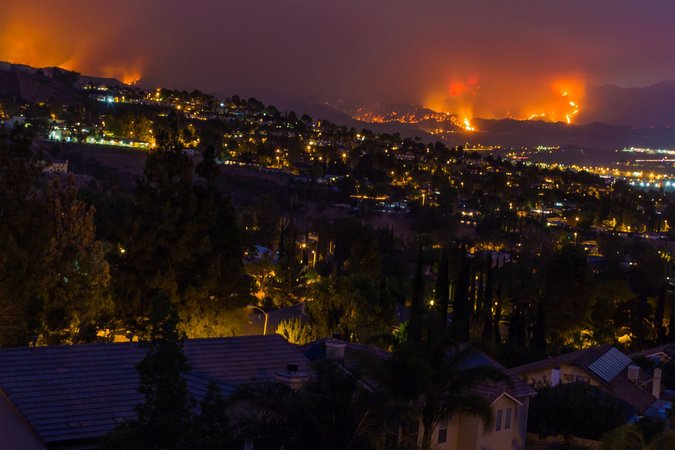Priorities and Effectiveness in Wildfire Management: Evidence from Fire Spread in the Western US
This working paper finds that fires are more likely to stop spreading as they approach homes, with the likelihood increasing with the number, and especially the value of, homes.
Abstract
Within the western United States, wildfire activity and costs of fighting wildfires have increased substantially over the past several decades. Yet surprisingly little is known about the effectiveness of wildfire suppression on large fires or about how wildfire incident managers use their significant discretion to prioritize resources threatened in wild-fire incidents. We investigate priorities and effectiveness of wildfire suppression using a novel empirical strategy that compares 1,500 historical fire perimeters with the spatial distribution of assets at risk to identify determinants of wildfire suppression efforts. We find that fires are more likely to stop spreading as they approach homes, particularly when those homes are of higher value. This effect of threatened assets persists after controlling for physical factors (fuels, landscape, and weather) using outputs from a state-of-the-art wildfire simulation tool, and the probability that fire spread will be halted is affected by characteristics of homes 1–2 km from a fire’s edge. Our results provide evidence that wildfire suppression can substantively affect outcomes from wildfires but that some groups may benefit more from wildfire management than others.
Key Findings
- Fires are more likely to stop spreading as they approach homes, with the likelihood increasing with the number, and especially the value of, homes. The model finds weak evidence that managers preferentially protect wealthy neighborhoods.
- Fire spread is 16 percent more likely to be halted when a fire is approaching a typical inhabited area. However, when the average value of properties in the fire’s path increases from $200,000 to $400,000, the probability of suppression increases by another 6.2 percent.





